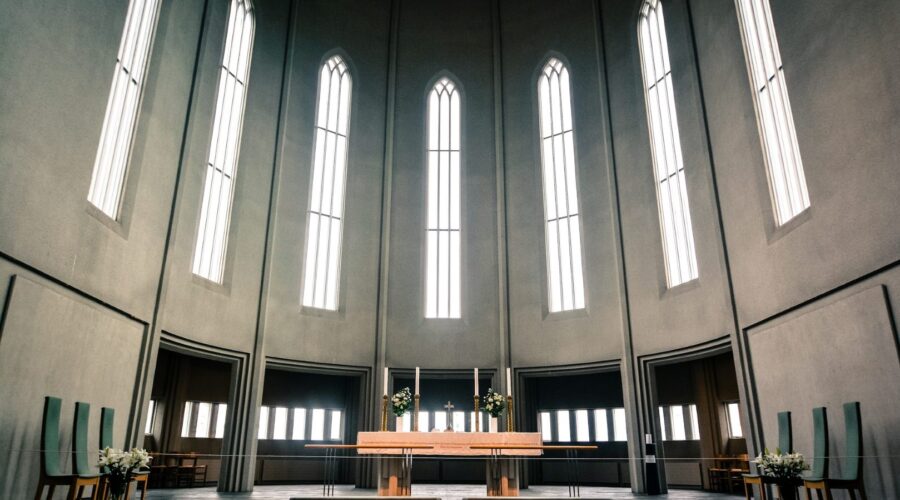Your cart is currently empty!
Unveiling the Splendor of Cathedral Churches: A Comprehensive Guide

1. Introduction
Cathedral churches, majestic symbols of faith and architectural prowess, have captivated hearts and minds for centuries. These extraordinary edifices serve as the primary seats of bishops and play a vital role in religious, cultural, and societal landscapes. In this comprehensive guide, we will delve into the captivating world of cathedral churches, exploring their history, architectural features, and significance in diverse communities.
2. Historical Origins
The roots of cathedral churches can be traced back to the early days of Christianity. In the 4th century A.D., under Emperor Constantine, the Edict of Milan granted freedom of worship, leading to the construction of numerous churches. Cathedral churches emerged as the most important of these, housing the bishop’s throne (cathedra) and becoming the center of diocesan administration.
Throughout the Middle Ages, cathedral churches flourished as symbols of ecclesiastical power and wealth. They became grand architectural masterpieces, showcasing the skills of master builders and artisans. The Gothic period witnessed a surge in cathedral construction, with soaring spires and intricate stained-glass windows becoming defining characteristics.
3. Architectural Characteristics
Cathedral churches are renowned for their distinctive architectural features that evoke awe and inspiration. These include:
3.1 Nave and Transepts
The nave is the central and longest section of the church, where the congregation gathers. It is typically flanked by aisles, which are smaller passageways, creating a basilica plan. Transepts, perpendicular to the nave, form the arms of a cross-shaped floor plan.
3.2 Choir and Presbytery
The choir is an enclosed area behind the altar, where the clergy sit. The presbytery, located behind the choir, is the most sacred part of the church, housing the altar and often adorned with elaborate decorations.
3.3 Tower and Spires
Many cathedral churches feature a prominent tower or spire, serving as a landmark and a symbol of the church’s importance. The height of spires has been a testament to the architectural prowess of builders throughout history.
3.4 Facade
The facade, or front entrance of the cathedral, is often elaborately decorated with sculptures, carvings, and stained-glass windows. It provides a glimpse into the grandeur that awaits within.
4. Ecclesiastical Significance
Cathedral churches hold immense religious significance as the seat of the bishop, who oversees the pastoral care of a diocese. They serve as the focal point for diocesan activities, including ordinations, confirmations, and major liturgical celebrations.
Cathedral churches also foster a sense of community among the faithful. They provide a sacred space for worship, fellowship, and spiritual growth. Many cathedrals offer a rich program of concerts, lectures, and educational events, contributing to the cultural and intellectual life of their surroundings.
5. Cultural and Historical Treasures
Cathedral churches have long been repositories of artistic and historical treasures. They house priceless works of art, including:
5.1 Stained-Glass Windows
Stunning stained-glass windows depict biblical scenes, historical events, and sacred figures. They cast colorful hues onto the interior, creating an ethereal atmosphere.
5.2 Sculptures and Carvings
Elaborate sculptures and carvings adorn the walls, columns, and facades of cathedral churches. These works of art depict religious themes, biblical characters, and scenes from daily life.
5.3 Tapestries and Textiles
Many cathedrals possess exquisite tapestries and textiles used for decoration and liturgical purposes. These intricate fabrics showcase the skill of medieval and Renaissance artisans.
6. Architectural Styles
Cathedral churches reflect the architectural styles prevalent at the time of their construction. Prominent styles include:
6.1 Romanesque
Romanesque cathedrals, built from the 11th to 13th centuries, are characterized by rounded arches, thick walls, and massive towers.
6.2 Gothic
Gothic cathedrals, built from the 12th to 16th centuries, showcase pointed arches, ribbed vaults, and intricate stained-glass windows.
6.3 Renaissance
Renaissance cathedrals, built from the 15th to 17th centuries, emphasize symmetry, classical forms, and elaborate ornamentation.
6.4 Baroque
Baroque cathedrals, built from the 17th to 18th centuries, feature elaborate decorations, curved lines, and dramatic lighting effects.
7. Famous Cathedral Churches
Throughout history, numerous cathedral churches have become renowned for their architectural splendor and historical significance. Some notable examples include:
7.1 Notre Dame Cathedral, Paris
Notre Dame Cathedral is a masterpiece of Gothic architecture, known for its iconic flying buttresses and stunning stained-glass windows.
7.2 St. Peter’s Basilica, Rome
St. Peter’s Basilica is the largest cathedral in the world, boasting a vast interior adorned with priceless works of art, including Michelangelo’s “Pietà.”
7.3 Canterbury Cathedral, UK
Canterbury Cathedral is the seat of the Archbishop of Canterbury and one of the most important pilgrimage sites in the Christian world.
7.4 Chartres Cathedral, France
Chartres Cathedral is famous for its exquisite stained-glass windows, which depict over 1,000 biblical scenes and historical figures.
7.5 Cologne Cathedral, Germany
Cologne Cathedral is a masterpiece of Gothic architecture, renowned for its twin spires that dominate the city skyline.
8. Conclusion
Cathedral churches stand as magnificent testaments to the power of faith and human ingenuity. They are not only architectural wonders but also living